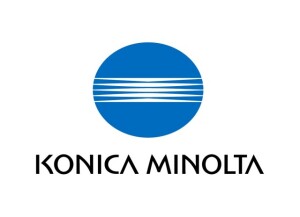
Konica Minolta's CR
REGIUS Nano ranked first
Konica Minolta received very high scores for its compact REGIUS Nano CR system in the most recent KLAS study. KLAS asked health care professionals for feedback about products and vendors. For instance, the research firm asked whether providers felt that they received their money's worth, whether the CR implementation was within budget, and whether support costs were as expected.
The REGIUS Nano was ranked highly for its technology, quality of implementation, service, and business relationship, according to Konica Minolta. In terms of overall performance, Konica Minolta's REGIUS Nano ranked first among many OEMs.
"I did a lot of research before I hitched my wagon to Konica and I've sold the Kodak, Fuji and Agfa. They're all good but the Konica has the best design. Competitively, economically, it is also the most affordable," said
David Denholtz, CEO, Integrity Medical Systems, Inc., Fort Myers, FL, an authorized reseller for Konica. He noted that the REGIUS Nano has a great feature that allows the user to release a cassette jam, which can be a concern with CR systems. Integrity Medical Systems sells the unit well below its list price. "A lot of my customers, when they hear the price, wonder why they still have their [film] processor."



Ad Statistics
Times Displayed: 109208
Times Visited: 6638 MIT labs, experts in Multi-Vendor component level repair of: MRI Coils, RF amplifiers, Gradient Amplifiers Contrast Media Injectors. System repairs, sub-assembly repairs, component level repairs, refurbish/calibrate. info@mitlabsusa.com/+1 (305) 470-8013
Konica beat out more expensive systems from other top-ranked companies including Philips, Carestream, FujiFilm, and Agfa.
About the CR Market:
CR equipment is a sizable market as a result of PACS technology and the possible prohibitive costs associated with digital radiography (DR) systems. Nearly 60 percent of the images acquired in hospitals come from x-ray. Converting x-ray images to digital media for image capture and storage is a way for radiology departments and imaging centers to enhance workflow efficiency and control long-term cost.
Some healthcare facilities are unable to justify the jump to DR in the face of technology limitations and budgetary constraints. These facilities may consist of smaller output clinics, rural hospitals, or radiology departments with low volumes. In these cases, the interim step of CR is a viable option and makes up a significant portion of the radiography equipment available on today's market, according to KLAS.
For this study, KLAS spoke with more than 140 individual healthcare professionals for feedback about the products and vendors they utilize to uncover the strengths and weaknesses in the market. Respondents rated their products and vendors with an average performance score of 88 out of 100. Among the questions KLAS asked were whether providers felt that they received their money's worth, if CR implementation was within budget, and if the support costs for CR were as expected, since cost is a large factor in the decision to utilize CR systems.
Back to HCB News

